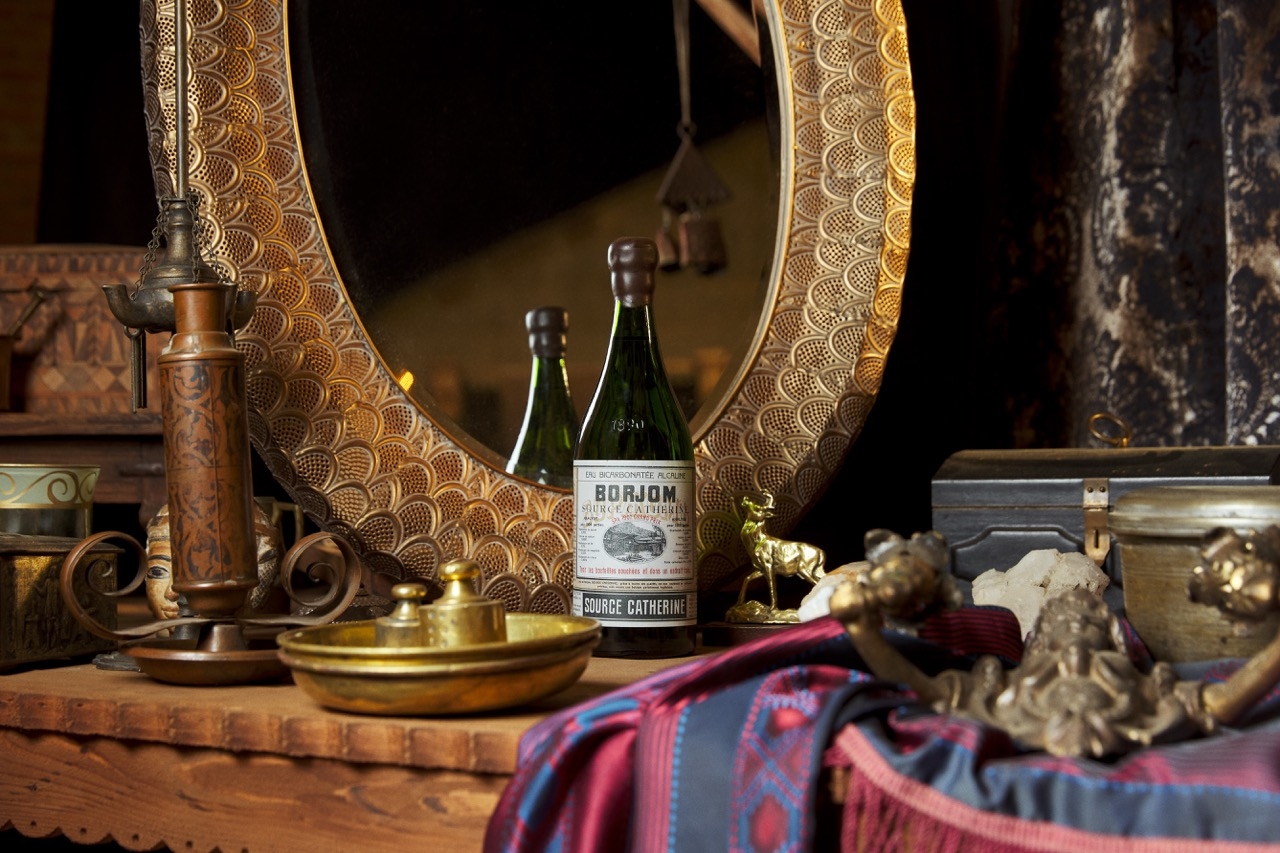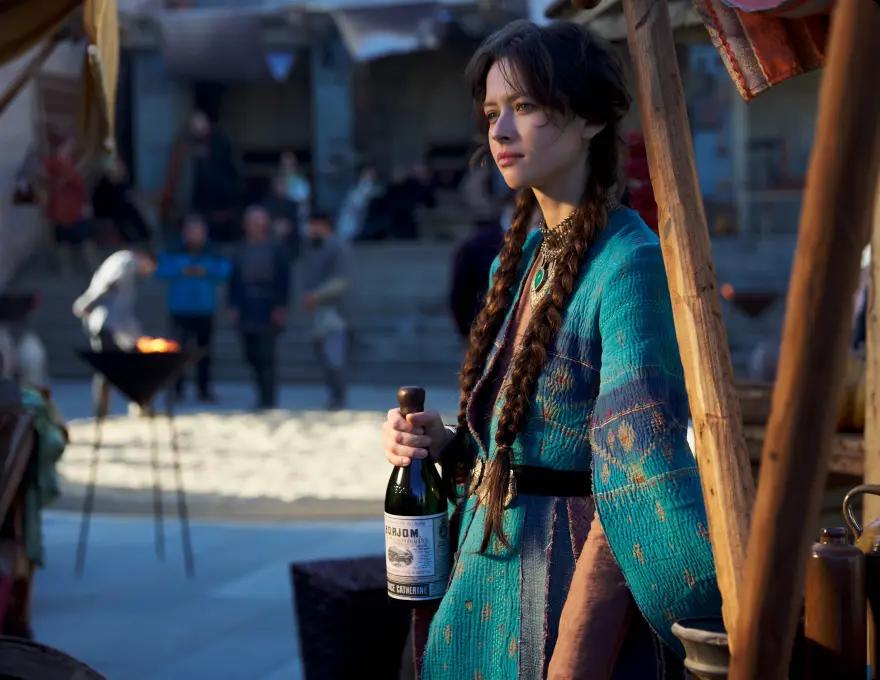
Live Water
Latest blogs
See All
A Photo Archive for the Future
The first Georgian mineral water celebrates its 135th anniversary this year.135 years ago, "Borjomi" was first bottled in an industrial manner. The oldest photos depicting "Borjomi" production are preserved in the Library of Congress in the United States. Their author is Sergei Prokudin-Gorsky, a pioneer of color photography.
The Library of Congress archive contains 20 photographs depicting Borjomi and its valley landscapes, the Borjomi water factory, and mineral water sources:
"Workers preparing Borjomi mineral water for transportation""Mineral water bottling department""At the mineral water source in Borjomi""Borjomi resort, vacationers drinking therapeutic water""View of Borjomi from Torsky Plateau""Olga's Bridge""Woman in traditional festive attire in Borjomi Park""Mikhail Nikolayevich Romanov's Palace"These are the titles given by Sergei Prokudin-Gorsky to the photographs he took in Borjomi between 1905 and 1915.
Sergei Prokudin-Gorsky first visited Georgia in 1905 and then again in 1912. He captured the first color photographs of Tbilisi, industrial photo reports in Batumi, newly planted tea plantations in Adjara, the Chakvi tea processing factory, and many other color photo documents of early 20th-century Georgia.
Prokudin-Gorsky dedicated his life to studying photography. He developed a camera that captured three consecutive frames on black-and-white film using blue, green, and red filters. With a projector of his own design, he was able to display astonishingly realistic color images.
In 1909, Prokudin-Gorsky sought support from Russian Emperor Nicholas II to implement a unique project. He aimed to document the empire’s diverse history, culture, and modernization using new color photography technologies. The royal chancery immediately granted him unlimited permission to take photographs. A specially equipped Pullman railway car with a built-in photo laboratory was prepared for the expedition. He also had at his disposal steamships, boats, and a Ford automobile for traveling through unpaved roads. The photographer traveled across Finland, the Caucasus, Crimea, Samarkand, Bukhara, and the Ural region, capturing nearly 10,000 photos that documented the Russian Empire in an unparalleled manner.
After the Bolshevik Revolution and the execution of the royal family in 1918, Prokudin-Gorsky fled to Norway and England before settling in France. He managed to take a significant portion of his photo archive with him. In Paris, he worked with the Lumière brothers and opened his own photography studio. Prokudin-Gorsky passed away in 1944.
In 1948, the U.S. Library of Congress purchased his glass-plate negatives from his heirs—a total of 1,902 negatives, 139 of which were taken in Georgia. This is how the unique photographic documents depicting the production of Borjomi mineral water ended up in the Library of Congress.
11 July, 2025

New visual identity of "Borjomi".
Georgian mineral water "Borjomi" has been creating history for 135 years. The brand, proud of its rich heritage and unique natural composition, will present itself to various markets around the world with an updated visual identity.
"Borjomi" is not just a brand, it's a commitment to its heritage. Crafted through a harmonious mix of traditions, pride in the brand's history, and a focus on its premium products, "Borjomi" continues to grow and expand into new markets. This is how the brand ensures consistency across the core and line extensions, staying true to its roots.
The brand's rich history inspires the updated identity. On the new packaging, the iconic symbol of "Borjomi" - deer, is now prominently featured on both the front and central sides of the bottle. The proudly standing deer reminds us of "Borjomi's" legendary discovery while conveying the brand's respect for its rich past.
Throughout history, "Borjomi's" landscape has been presented on the bottle in an oval shape. To honor this tradition, the Borjomi mountains alongside the deer will once again appear on the packaging, this time in a modernized oval shape. This change highlights the brand's high quality and premium feel.
The updated packaging also gives the brand an opportunity for consistency — to expand product categories without losing the connection between them. The visual consistency of the brand and its sub-brand is evident in the newest "Borjomi" product, "Limonati".
"This design architecture strategy will be fundamental to the brand as it extends into other categories in the coming years." — This is how visual identity author Osborne Pike describes the update.
Today, "Borjomi" stays true to its history, proudly narrating its legendary tale through updated packaging. By blending the pride of its traditions, driving premiumness, and visual consistency, "Borjomi" continues to share Georgian culture with every customer.
12 August, 2024

Borjomi - The Birthplace of Natural Miracles
Borjomi is a city of extraordinary beauty, with holistic and historical significance, where the air is infused with the essence of adventure. This enchanting destination boasts picturesque landscapes, healing mineral and sulphurous waters, and echoes of a rich historical past. What sets Borjomi apart and makes it irresistibly attractive?
The Borjomi Central Park - situated in the heart of the city, is a haven for those seeking peace and a connection with nature. Wandering along its winding paths reveals breathtaking sights—charming river valleys, aromatic trees, and beautiful bridges. It is the perfect retreat from the demands of daily life, allowing you to bask in the tranquility of nature.
Within this idyllic park, you can savor the legendary mineral water of Borjomi, renowned for its therapeutic properties. A short stroll beyond the park's borders unveils another dimension of holistic experience—the sulfur pools of Borjomi. These warm, mineral-rich waters offer relaxation for muscles, improved skin texture, respiratory health, and stress relief, providing a rejuvenating escape.
Immersing oneself in the sulfur baths is a time-honored ritual, an essential experience for every visitor to Borjomi.
Borjomi mineral water - a magical elixir flowing from the depths of the earth, is globally renowned for its healing properties. Originating from the Caucasus at a depth of 8,000 meters, it contains up to 60 minerals, explaining its unique attributes.
This mineral water is deeply ingrained in the culture and history of Georgia, symbolizing Georgian hospitality. No festive table or diplomatic meeting is complete without Borjomi mineral water, a testament to its status as a natural wonder and a source of pride for the Georgian people.
The Borjom-Kharagauli National Forest Park - nestled in the Caucasus Mountains, stands out for its biodiversity and natural treasures, making it a haven for nature enthusiasts and adventure seekers. The park's numerous hiking trails lead to stunning views, dense forests, secluded meadows, and babbling streams, each step revealing the picturesque landscapes of Georgia's nature. Rare species such as red deer, roe deer, and even deer may grace your journey.
Beyond its natural wonders, Borjom-Kharagauli National Park holds cultural significance, featuring ancient watchtowers and ruins.
Historical and cultural monuments - the Borjomi area is not only abundant in natural wonders but also steeped in historical and cultural monuments. Notable landmarks include the Museum of Local Lore of Borjomi, Green Monastery, Romanov Palace, Petra and Atzuri Castles, Timothesubani Monastery, and more.
Of particular mention is the Borjomi Local Lore Museum, one of Georgia's oldest museums housed in a uniquely designed building that served as the Romanov royal family's chancellery. The museum presents a comprehensive journey through the ages, showcasing tens of thousands of exhibits and artifacts from the Bronze Age, the early Middle Ages, and the modern era. Valuable cultural monuments, military and agricultural tools, meticulously preserved manuscripts, as well as specimens of flora and fauna, collectively paint a vivid picture of Borjomi's evolution.
Whether strolling through the central park, indulging in mineral waters, or exploring historical sites, Borjomi beckons you to pause, take a deep breath, and immerse yourself in the beauty and tranquility of these extraordinary places. A visit to Borjomi is not merely a trip; it's an opportunity to experience the wonders of Georgia's nature.
05 March, 2024

A Chemical Marvel
Science has uncovered a terrestrial explanation for phenomena once deemed miraculous by people. At first glance, one might assume that these miracles have lost their significance, echoing Nietzsche's sentiments. However, in reality, science has added an additional, deeper dimension to miracles. Today, we delve into the composition of Borjomi—a miracle explained through science.
In ancient times, there existed a unified sea between what is now known as the Black Sea and the Caspian Sea. Over time, the earth shifted, rocks moved, and towering mountains emerged from the sea. The Black Sea and the Caspian Sea parted ways, with the water between them seeping deep into the ground.
This historical event, though it may seem distant, occurred a mere 1-2 million years ago. The mountain that rose above the sea is considered geologically young, boasting a richness in minerals that easily wash away—this is the essence of Borjomi, youthful and teeming with microelements.
Scientists identify 13 vitally important elements, and astonishingly, Borjomi contains all of them.
The miraculous healing attributed by ancient people to an inexplicable force, be it God or angels, is now understood as the result of the collaborative efforts of potassium, sodium, phosphorus, soda, calcium, magnesium, silicon, chlorine, aluminum, titanium, zinc, fluorine, strontium, and boron. These elements, often taken for granted, deserve appreciation and recognition, prompting us to delve into their significance.
K - PotassiumPotassium is crucial for normal cell functioning, regulating the heartbeat, and ensuring the proper functioning of muscles and the nervous system. Since the human body cannot produce potassium on its own, it must be obtained from external sources, with Borjomi being a surprising supplier.
Na - SodiumSodium is essential for maintaining fluid balance in the body, preventing discomfort caused by dehydration. Borjomi stands out as a significant source of sodium.
Ca - CalciumA highly demanded and deficient element in modern times, calcium strengthens bones, teeth, and aids muscle relaxation. It also regulates blood pressure and plays a vital role in ensuring proper communication between the brain and the rest of the body.
Zn - ZincZinc is necessary for strength restoration, wound healing, cell division, and immune system support.
Se - SeleniumA key element in metabolism, selenium acts as a shield for cells, protecting against harmful free radicals that cause various diseases. Selenium is particularly crucial for the thyroid gland.
P - PhosphorusMeaning "light bearer" in Greek, phosphorus is vital for teeth and bone formation, regulates blood acid-alkaline balance, and promotes cell renewal.
Mg - MagnesiumEssential for the absorption of other elements, magnesium prevents imbalances and participates in over 350 bodily processes. Borjomi, rich in magnesium, ensures the effective utilization of other minerals.
S - SulfurAs the most common element in the world, sulfur contributes to the spatial structure of protein molecules, supporting the metabolism of essential amino acids crucial for various bodily functions.
Pause for a moment, close your eyes, focus on your body, and feel the myriad processes within. Our bodies, filled with diverse elements, undergo continuous cellular activity—breaking down, birthing, cleansing, transporting information, oxygen, fighting parasites, healing wounds, and nourishing. The human body, an intricately evolved mechanism, is a marvel deserving of attentive care. In this very moment, our bodies are hosts to countless processes, emphasizing the miracle within us.
This miracle warrants careful consideration and appreciation, as there may be nothing more precious than the body we possess.
In addition to the minerals mentioned, Borjomi contains over 60 elements, making it one of the world's finest mineral waters—a scientifically proven marvel!
27 December, 2023
Frequently viewed blogs


